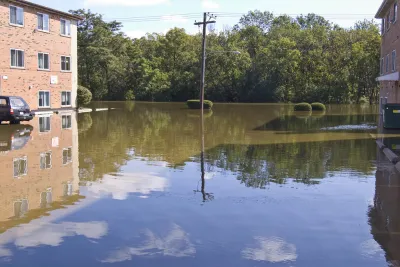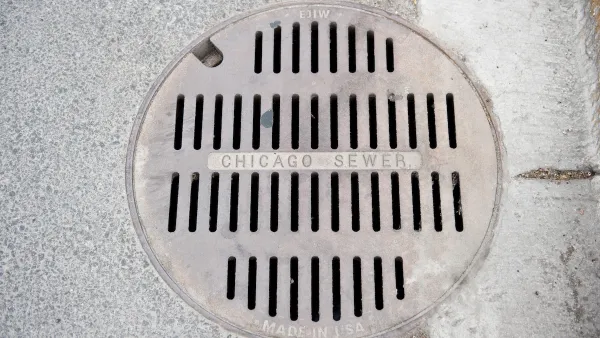Chicago residents living in low-lying parts of the city dread the rainfall that too often brings flooding.

Michael Hawthorne and Morgan Greene report on flooding in Chicago that leaves residents with basements full of water, sewage, and, in some cases, sewer flies. The city’s aging sewer infrastructure cannot handle any sort of rainwater deluge, and the results of the urban flooding have been substantial, write Hawthorne and Greene:
Flood losses in the city and suburbs cost taxpayers $1.8 billion in subsidized grants, loans and insurance payments between 2004 and 2014, according to a report released last month by the National Academy of Sciences. Only hurricane-ravaged areas of coastal Louisiana, New York and Texas received more federal flood aid during the decade.
A number of Chicago neighborhoods are in low-lying areas that make them vulnerable to flooding. "To make matters worse, sewers in Chicago and older suburbs were designed to handle runoff as well as waste from homes and factories. When it rains, the combined sewers quickly fill up, forcing a noxious brew to flow back into basements and out of dozens of overflow pipes into local streams," say Hawthorne and Greene.
Community advocates say the city has been slow to respond, even as it has continued work on the Deep Tunnel, an underground tunnel system designed to handle the runoff that will not be completed until 2029. Some neighborhoods are being proactive and working with organizations like the Center for Neighborhood Technology on strategies to help better manage stormwater drainage.

National Parks Layoffs Will Cause Communities to Lose Billions
Thousands of essential park workers were laid off this week, just before the busy spring break season.

Retro-silient?: America’s First “Eco-burb,” The Woodlands Turns 50
A master-planned community north of Houston offers lessons on green infrastructure and resilient design, but falls short of its founder’s lofty affordability and walkability goals.

Delivering for America Plan Will Downgrade Mail Service in at Least 49.5 Percent of Zip Codes
Republican and Democrat lawmakers criticize the plan for its disproportionate negative impact on rural communities.

Test News Post 1
This is a summary

Test News Headline 46
Test for the image on the front page.

Balancing Bombs and Butterflies: How the National Guard Protects a Rare Species
The National Guard at Fort Indiantown Gap uses GIS technology and land management strategies to balance military training with conservation efforts, ensuring the survival of the rare eastern regal fritillary butterfly.
Urban Design for Planners 1: Software Tools
This six-course series explores essential urban design concepts using open source software and equips planners with the tools they need to participate fully in the urban design process.
Planning for Universal Design
Learn the tools for implementing Universal Design in planning regulations.
EMC Planning Group, Inc.
Planetizen
Planetizen
Mpact (formerly Rail~Volution)
Great Falls Development Authority, Inc.
HUDs Office of Policy Development and Research
NYU Wagner Graduate School of Public Service





























